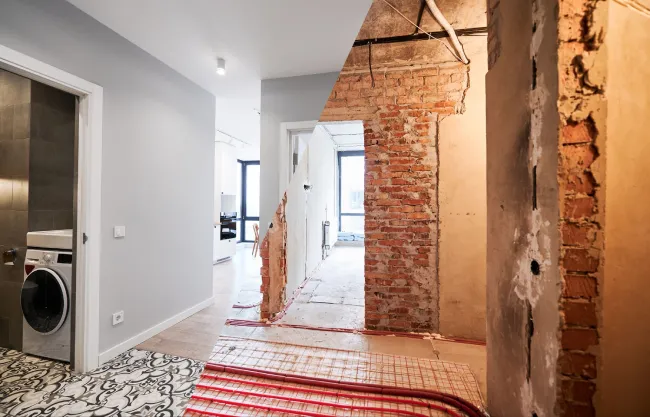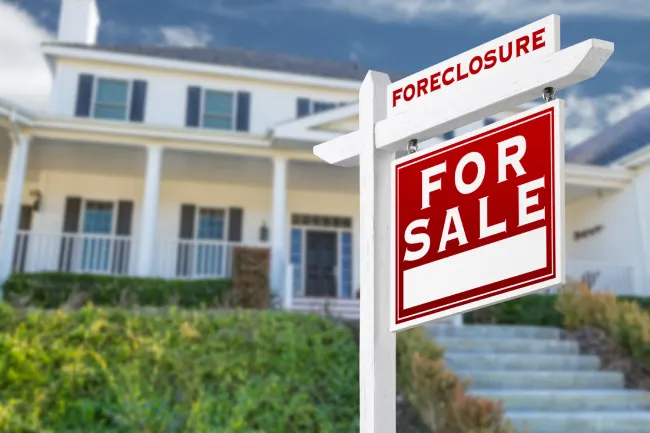People invest in real estate to realize financial gains. However, not all rental properties are sound investments. Before you invest in a rental property, it’s important to understand the potential return on investment (ROI). This allows you to evaluate a property’s potential profitability before you invest.
You must understand the ROI concept and the calculations involved to calculate ROI on an investment property and know what the results mean. The formula can differ based on whether you pay for the property with cash or a mortgage.
Calculating rental property ROI helps you make informed decisions when you invest in a particular property. This guide explains the concept of ROI, how to calculate it, and how to interpret the results.
What is ROI on Rental Property?
A property’s ROI is a metric used to determine your investment’s profitability. It indicates how your investment might translate into financial gains. Return on investment is a standardized measurement to assess whether investing your money in a particular rental property is a good choice or if you should move on. Calculating and understanding ROI is critical for making informed decisions.
It can be hard to figure out the ROI to use for investment properties. This is particularly true for rental property because of how many factors can affect the calculation. For example, all of the following variables can affect your ROI calculation:
- Cash purchase vs. financed purchase
- Anticipated cash flow
- Vacancy rate
- Operating costs
- Needed repairs and renovations
Below, we’ll look at how ROI on a rental property is calculated using several methods.
How to Calculate ROI on Rental Property
You can calculate ROI on rental property in several ways. The method you choose depends on the variables involved as previously described.
The simple ROI formula for investments in general is:
Return ÷ out-of-pocket dollar amount paid for the investment = ROI
However, the calculation for rental property is different because of the additional variables involved and can use one of the following methods:
Cash Flow ROI
Calculating the cash flow ROI of a rental property tells you how much money you can expect to receive each month after expenses. Like the general ROI formula for investments, the cash flow ROI formula is straightforward:
Gross rent ÷ total expenses = cash flow ROI
A property’s expenses can include the following:
- Advertising costs while vacant
- Maintenance
- Repairs
- Property insurance
- Property taxes
- Property management company expenses
For example, if you rent out a property for $2,000 per month and have other expenses totaling $300, the cash flow ROI calculation would be as follows:
$2,000 – $300 = $1,700
This calculation tells you what you can expect to earn each month from a rental property based on its cash flow in and out.
Rental Property’s Cash-on-Cash Return
You can use a rental property’s cash-on-cash return on rentals calculation to evaluate how well it might perform in a year. This metric measures its annual cash flow based on how much money you invest. The cash-on-cash return formula is:
Annual cash flow ÷ total amount invested x 100 = cash-on-cash return
Using the example above, the cash-on-cash return would be calculated as follows:
($2,000 x 12) ÷ (300 x 12)100 = cash-on-cash return
Performing the calculations would provide the following result:
$24,000 ÷ 3,600 x 100
$24,000 ÷ 360,000 = 6.7%
Capitalization Rate
A property’s capitalization rate (cap rate) is its estimated return rate. Lower cap rates indicate a lower risk, while higher cap rates mean greater risk.
The cap rate formula is:
Net operating income (NOI) ÷ purchase price x 100 = cap rate
To calculate the cap rate, you’ll first need to know how to calculate a property’s net operating income. NOI is the difference between the property’s generated rental income and your operating expenses and losses. The NOI does not take into account mortgage expenses and instead measures a rental property’s profitability solely based on operating expenses and vacancies. To calculate NOI, use the following formula:
Gross rental income – operating expenses and vacancy losses = NOI
Using the previous example, assume the property is vacant for two months, and you collect $2,000 per month for the other 10 months with monthly operating expenses of $300:
$20,000 – ($3,600 + $4,000) = NOI
$20,000 – $7,600 = $12,400 NOI
Now, let’s take the NOI from this hypothetical and plug it into the cap rate formula, assuming you paid $200,000 for the property:
$12,400 (NOI) ÷ $200,000 (purchase price) x 100 = cap rate
$12,400 ÷ 20,000,000 = 6.2% cap rate
A cap rate below 5% indicates lower risk, but it will take longer to recoup your investment. Cap rates typically range from 5% to 10% for rental properties.
Calculating ROI for Cash Purchases
Calculating a rental property’s ROI when you purchase it with cash is fairly simple.
Say you purchased the property for $200,000 in cash, paid $2,000 in closing costs, and invested $10,000 in renovations. Your total investment would thus total $212,000. If you then rent it out for a year for $2,000 per month with monthly expenses totaling $300, its annual return would be:
$24,000 – $9,600 = $20,400
To calculate the ROI for your cash-purchased property, divide its annual return by your total investment:
$20,400 ÷ $212,000 = 9.6% ROI
While this might seem like a decent ROI, let’s take a look at the same property but assume you financed it.
Calculating ROI on a Financed Property
A rental property’s ROI calculation is more complex when you finance it because of the additional variables involved. For example, using the same example above, assume you took out a mortgage instead of making a cash purchase.
Assume you need to make a 20% downpayment of the purchase price, which would be $40,000. Closing costs for financed properties are higher than cash purchases. We’ll assume they will be 3% or $6,000. You then spend $10,000 on renovations.
You’ll also need to account for ongoing expenses involved with a mortgage.Interest rates for mortgages used to purchase investment properties are typically higher than regular mortgages used to buy a primary home. This is because banks view investment property mortgages as carrying a greater risk of default. You can expect to pay up to 1 percentage point higher in interest for an investment mortgage than a regular mortgage loan.
Using current investment mortgage rates as of Aug. 30, 2024, assume you take out a 30-year loan with a fixed 6.49% rate. On the $160,000 borrowed, your monthly mortgage payment, including principal and interest, would be $1,118.74. If you then add the $300 per month for ongoing operating expenses (taxes, water, and insurance), your total monthly payment would be $1,418.74.
Your rental income for the year at $2,000 per month would be $24,000, and the property’s monthly cash flow would be $2,000 – $1,418.74 = $581.26.
Its annual return would be calculated as follows:
$581.26 x 12 = $6,975.12
To calculate the property’s ROI, use the following formula:
Annual return ÷ Original out-of-pocket expenses = ROI
Plug in the numbers as follows:
$6,975.12 ÷ (downpayment + closing costs + renovations)
$6,975.12 ÷ ($40,000 + $6,000 + $10,000)
$6,975.12 ÷ $56,000 = 12.5% ROI
The 1% Rule ROI Calculation
Under the 1% rule, the monthly rent for a rental property should be a minimum of 1% of its purchase price to increase the chance it will generate a positive cash flow. Take the monthly rent you believe you could charge and divide it by the purchase price times 100. The property will likely be profitable if the result is at least 1%. If it is less than 1%, it might not be.
Other Factors to Consider About Potential Rental Properties
You’ll need to assess several other factors before buying a rental property. A property should be attractive to tenants and able to retain them. This helps to make the income more reliable.
You should assess the following factors when deciding whether to purchase a particular property:
- Safety of the neighborhood – High crime rates deter prospective tenants and can result in higher vacancy rates.
- Area employment opportunities – Areas with more job opportunities attract tenants.
- School district rating – If the school district has a good rating, the property may be more attractive to families who tend to become long-term tenants.
- Area amenities – Neighborhoods with access to public transportation, parks, and retail districts may be more attractive to tenants.
- Neighborhood vacancy rates – If there are numerous rental listings or vacant properties in the neighborhood, it might be hard to keep the property rented.
A real estate agent should be able to answer these and other questions you might have about a neighborhood. For a multifamily property, ask the seller for data on historical vacancy rates, and conduct market research to determine whether the market is saturated before you buy.
Investing in rental properties can be a good way to realize financial growth and build wealth. However, you must evaluate a property carefully before you invest your money. Calculate the ROI and research the neighborhood and market to make an informed investment decision.







